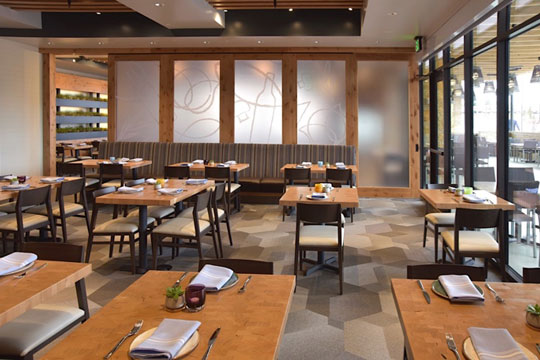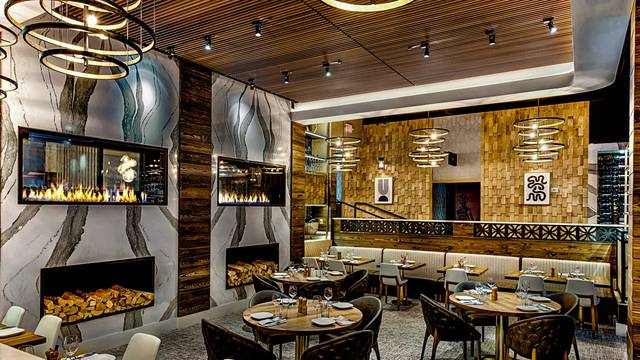Best Asian Restaurant Islamabad: Experience Flavors from Across Asia
Best Asian Restaurant Islamabad: Experience Flavors from Across Asia
Blog Article
Savor Genuine Eastern Cuisine With a Pan-Asian Twist for a Cooking Adventure
Beginning on a culinary journey via genuine Eastern food, improved with a Pan-Asian twist, provides an unique opportunity to discover the abundant tapestry of flavors that define the area's varied cooking customs. As you consider these attracting dishes, consider the social stories and historical influences that form them, each bite supplying a tale waiting to be uncovered. best asian restaurant Islamabad.

Exploring Pan-Asian Flavors
In the world of international gastronomy, Pan-Asian cuisine stands apart for its impressive diversity and the harmonious interplay of tastes from different Asian cultures. This culinary technique celebrates the abundant traditions and special components found throughout the continent, creating a tapestry of tastes that is both gratifying and appealing. Key to Pan-Asian cuisine is its ability to stabilize contrasting flavors-- sweet, salted, spicy, and sour-- while highlighting the quality and quality of each ingredient.
From the umami-rich soy sauce of Japan to the intense chili peppers of Thailand, Pan-Asian cuisine provides a comprehensive palette of tastes. These components are usually integrated in innovative methods, boosting dishes with layers of intricacy. As an example, the usage of fragrant herbs such as lemongrass and cilantro, common in Vietnamese and Thai cuisine, includes a refreshing illumination to dishes, while the unification of coconut milk delivers a luscious, abundant appearance.
The emphasis on fresh fruit and vegetables and fragrant spices ensures that each meal is not only a feast for the taste but additionally for the senses. Pan-Asian cuisine welcomes restaurants to start a culinary journey, exploring the large and differed landscapes of Asian gastronomy with every bite.
Combination Dishes to Attempt
While Pan-Asian food is celebrated for its traditional flavors, the modern cooking landscape is increasingly accepting blend meals that blend these traditional aspects with influences from various other areas. This ingenious technique not only honors the rich heritage of Asian cooking arts yet additionally introduces unique preference experiences that appeal to contemporary tastes.
An archetype of such a fusion meal is the Korean-Mexican taco, where marinaded bulgogi beef is wrapped in a cozy tortilla, covered with kimchi and a zesty gochujang-infused salsa. This combination marries the bold, full-flavored tastes of Korea with the dynamic, fresh elements of Mexican food. Similarly, sushi burritos have acquired popularity, amalgamating the delicate creativity of Japanese sushi with the passionate, hand-held ease of a burrito, often featuring combination active ingredients like tempura shrimp and avocado with a drizzle of wasabi mayo.
Another noteworthy meal is Thai curry ramen, which instills the velvety, fragrant flavors of Thai curry into the calming brew of traditional Japanese ramen, producing a harmonious blend that tantalizes the detects. These blend recipes prolong past mere uniqueness; they stand for a cooking dialogue in between societies, motivating expedition and technology in the globe of Pan-Asian food.
Crucial Components and Spices
To really value Pan-Asian cuisine, one must recognize the important components and flavors that form its foundation. This diverse culinary style draws from a rich tapestry of Eastern practices, utilizing a harmonious blend of structures and tastes. Key components include soy sauce, fish sauce, and oyster sauce, which impart a mouthwatering umami depth crucial to Asian dishes. Complementary to these are rice outdoor dining near me vinegar and mirin, lending a fragile acidity and sweetness.
Fragrant elements are pivotal, with lemongrass, garlic, and ginger being ubiquitous across various Pan-Asian recipes. These ingredients offer a great smelling base that improves the intricacy of tastes. Flavors such as celebrity anise, cardamom, and cinnamon introduce warmth and personality, echoing influences from regions like China and India.

Cooking Techniques and Tips
Understanding the art of Pan-Asian cuisine calls for familiarity with its unique cooking methods, each adding to the vibrant tapestry of tastes this cooking tradition is commemorated for. Central to these approaches is the stir-fry, a fast food preparation technique that maintains the nutritional honesty and dazzling shades of active ingredients. Utilizing a wok, the stir-fry method permits even warm distribution, important for achieving the particular texture and flavor equilibrium of Pan-Asian meals.
An additional basic technique is steaming, particularly widespread in Chinese food. This gentle method keeps the natural tastes and nutrients of ingredients, making it excellent for seafood and vegetables. Dumplings, a cherished staple, frequently benefit from steaming, resulting in soft, succulent structures.
Grilling, additionally essential, presents smoky depths to dishes such as Korean bulgogi or Japanese yakitori (pan asian dining Islamabad). This technique commonly involves seasoning ingredients, enabling flavors to permeate deeply before food preparation over an open fire or hot plate
Finally, mastering the art of stabilizing tastes-- sweet, sour, salted, bitter, and umami-- is essential. Properly layering these aspects can boost a meal from common to amazing, offering a complex and pleasing culinary experience that symbolizes the significance of Pan-Asian food.
Eating Experiences Worldwide
Around the world, Pan-Asian food supplies an exceptional dining experience, commemorated for its abundant tapestry of tastes and lively presentations. This culinary phenomenon has gone beyond cultural boundaries, capturing the hearts and tastes buds of food lovers worldwide. In multicultural cities like New York, London, and Sydney, Pan-Asian restaurants work as fusions where culinary customs from Thailand, Japan, China, and past assemble, providing restaurants with an eclectic mix of recipes that highlight the region's diversity.
The international appeal of Pan-Asian cuisine hinges on its ability to use both credibility and technology. Cooks masterfully wed standard active ingredients such as lemongrass, soy sauce, and miso with contemporary techniques, leading to recipes that are both refreshingly new and acquainted. This fusion permits restaurants to start a cooking trip that values heritage while accepting modernity.
Moreover, eating experiences are raised with attentively designed environments that mirror the principles of Pan-Asian appearances. From minimalist Japanese-inspired interiors to vivid Thai-themed spaces, each dining establishment provides a special ambiance that enhances the cooking offerings. As a result, patrons are not merely eating a dish but partaking in a social experience, making Pan-Asian dining a truly global sensation.
Conclusion
The exploration of Pan-Asian food uses an extensive understanding of the complex interplay of tastes la cantina and cooking traditions across Asia. By embracing combination meals such as Thai curry ramen and sushi burritos, the cooking journey not only highlights the flexibility of typical ingredients yet likewise showcases cutting-edge contemporary techniques. This gastronomic experience, enhanced by vital seasonings and cooking techniques, offers a special opportunity to value the social diversity and culinary virtuosity that define Pan-Asian food on an international scale.
Beginning on a cooking journey via authentic Asian food, improved with a Pan-Asian spin, supplies an unique opportunity to explore the rich tapestry of tastes that define the area's diverse culinary practices.In the world of worldwide gastronomy, Pan-Asian food stands out for its impressive variety and the unified interplay of tastes from numerous Eastern societies. Trick to Pan-Asian cuisine is its capacity to balance different flavors-- wonderful, salted, spicy, and sour-- while highlighting the freshness and high quality of each ingredient.

Report this page